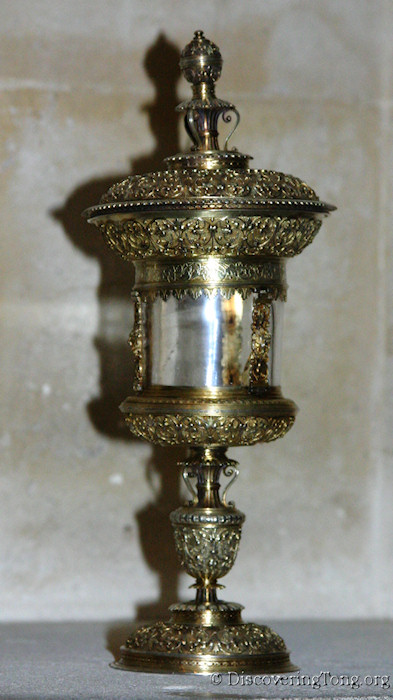Silver gilt Tong Cup

 Return to main Church Guide
Return to main Church Guide
The splendid Tong Cup has been variously attributed. Pevsner ➚ dates it between 1540 and 1550, which is far too early. He and Griffiths attribute its design to Holbein ➚. Griffiths says it is a sacramental vessel from the time of King Henry VIII and belonged to Tong College. He thought it was a ciborium for holding communion wafers. Cranage says it was a monstrance for displaying the reserved sacrament. Auden speculates that it might have belonged to the College, removed at the Dissolution, and given back later.
The cup stands 11 inches high. It is decorated with vine leaves and grapes. Set in the middle is a piece of carved Crystal. This is held in place by clasps, with lion’s heads on them. It is made of silver gilt, and has no markings to provide details of its provenance, or maker. All we know is that it came to Tong in 1630. This is itself a clue. There are four other pieces made by the same hand; one is in the Victoria & Albert Museum (dated 1611), and three are at Corpus Christi College, Cambridge. A cup, of very similar design, can be seen at the Louvre in Paris. It is probably not a religious object, but a Stading Cup, or a Salt.
Recent research attributes these items to a silversmith whose mark was TvL or LvT. This may be Dierick Lookermans. He was a Dutch goldsmith and jeweller who worked in London for some time and appears to have been there between 1609-12. It used to be kept in a safe in the vestry, it is now on display at Lichfield Cathedral.
See also:
Fine Jacobean oak pulpit, Monument to Ann Wylde 1609-24